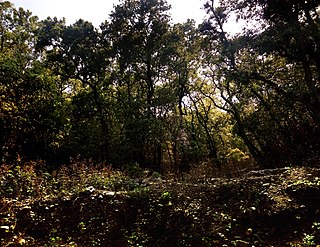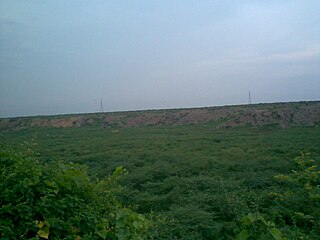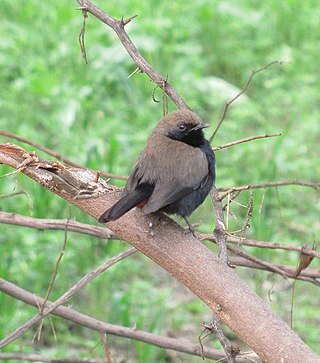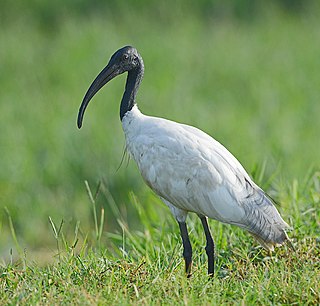Conservation efforts
Legal and institutional
Legal framework - Natural Conservation Zones (NCZs)
In 2019, Haryana government passed the amendment to the Punjab Land Alienation Act, 1900 (PLPA), which had obtained ascent from the governor but has not yet been notified by the Haryana government, whence it is in limbo and has not officially become a law. This amendment remove the legal protection for the large forest areas which act as green lungs and buffer zone against pollution, thus further degrading Haryana's ecology, biodiversity, air quality, water table recharge rate. Haryana government submitted a proposal to "NCR Planning Board" (NCRPB) to reduce Haryana's Natural Conservation Zones (NCZs) by removing 60,000 acres of Aravalli land. After this Haryana's NCZ will decrease by 47% from 122,113.30 hectares to only 64,384.66 hectares. [32]
These forest lands proposed to be removed from the NCZ are mostly part of village common land, and after the legal NCZ status is removed these will become available for real estate construction and commercial sale. This is in violation of multiple guidelines of the Supreme Court of India which defines the forest by its natural definition. This also violates the NCRPB goal of limiting construction activities to mere 0.5% area of NCZ. NCRPB notification also clearly states that this original 122,113.30 hectares ecologically sensitive forest of South Haryana is a forest, "The major natural features, identified as environmentally sensitive areas, are the extension of Aravalli ridge in Rajasthan, Haryana and NCT-Delhi; forest areas; rivers and tributaries... major lakes and water bodies such as Badkhal lake, Suraj Kund and Damdama in Haryana sub-region". [32]
Biodiversity Board
Haryana Biodiversity Board was established by the government in 2018 to protect and preserve the biodiversity of forests, flora and fauna in the state, specially in the biodiversity hotspots of Shivalik and Aravali hills that are under threat. Forests areas of the state were digitised with the help of Haryana Space Applications Centre, Hisar and ISRO. Assets and plants monitoring system for managing forests, nurseries, trees, etc. had been made online. [33]
To protect the environment 2,200 community self-help groups and 2,487 village biodiversity groups were formed and 25,000 women were trained in 2018. MoU were signed with NHAI and Indian Railways to plant trees along national highways and rail lines, and a policy has been formed to establish city forests. A 50,000 hectare self-help community herbal forest is being established in SHivalik hills with the guidance of Baba Ramdev's Patanjali Yogpeeth. Trap cameras were set up in Kalesar National Park and 23 leopards were found. Endangered eagles were released in wild from the Jatayu Conservation Breeding Centre, Pinjore after successful breeding. Pipli and Rohtak zoos were being modernised. [33]
Water conservation entities
Haryana government has established the following:
- Haryana Pond and Waste Water Management Authority (HPWMA), also called the Haryana Pond Authority (HPA)
- Haryana Waste Resource Authority (HWRA))
Issue based initiatives
Green corridors
A 1,600 km long and 5 km wide The Great Green Wall of Aravalli green ecological corridor along Aravalli range from Gujarat to Delhi which will also connect to Shivalik hill range is being considered with planting of 1.35 billion (135 crore) new native trees over 10 years to combat the pollution, 51% of which is caused by the industrial pollution, 27% by vehicles, 8% by crop burning and 5% by Diwali fireworks. [34]
There are no wildlife crossings in Haryana, NCR or Delhi-Sariska Wildlife corridor, and there is a need for additional crossings, such as those needed at Delhi Mumbai Expressway.
Urban wildlife corridor in NCR
NCR Wildlife Corridor, also called Delhi Wildlife Corridor', will be jointly developed by Haryana and Delhi governments as India's first urban wildlife corridor by building underpasses to ensure safe passage for wild animals, especially leopards, who frequent the roads in the forested and hilly areas in Delhi, Gurgram, Faridabad and Nuh. Leopards are seen as far as Sultanpur metro depot, and Delhi government has deployed drones and installed wildlife cameras to track the leopards in that area, once trapped they are released in the Asola Bhatti Wildlife Sanctuary. [35] As of June 2021, it was in the planning phase.
Wetlands conservation and ground water recharge
In 2021, as per NASA the rate of groundwater depletion in India is 1 metre per year whereas in Haryana it is 3 metres per year. [36]
In 2021, as per Central Ground Water Authority (CGWA) data the water table in Haryana's 85 Community Development Block (CD Blocks) out of a total of 141 blocks was categorised in red category. In 2004, only 55 blocks were in red category, thus red zone blocks have increased by 30% in the last 17 years. 14 out of 22 districts of Haryana are in red zone. Haryana annually extracts 137% of its groundwater compared to its annual groundwater recharge, whereas national average is only 63%. Main culprit it water intensive paddy crop, consequently Haryana government was aiming to reduce the area under paddy cultivation by 200,000 (2 lakh) in year 2021 alone through providing financial incentives, aggressive regulation, monitoring and people's participatory. India is the world's largest groundwater user by volume. Haryana's annual groundwater recharge from rain and canals is 10.15 billion cubic metres (bcm), 9.13 bcm is extractable (one cubic metre has 1,000 litres), annual groundwater extraction in 2021 was 12.50 bcm including 11.53 bcm for agricultural irrigation and 0.63 bcm for domestic and 0.34 bcm for industrial use. More groundwater is withdrawn in over half of Haryana than recharged each year, thus causing rapid continuous depletion of groundwater table. Haryana has initiated regular water audit and 1,700 piezometers were installed in critical red blocks for real-time monitoring of the groundwater table. [37] As of 2021, Haryana has initiated union government and World Bank funded INR Rs 678 crore "Atal Bhujal Yojana" which aims to reduce groundwater depletion by 50% by 2025, this project will run in 1669 gram panchayats of 36 blocks in 14 districts. "The major objective of this scheme is to create hydrogeological data network of groundwater resources in Haryana and encourage creation of community institutions for the management of groundwater resources in the state." [36]
On 1 November 2017, Chief Minister of Haryana Manohar Lal Khattar announced that Government of Haryana will form the Haryana Pond and Waste Water Management Authority (also called the Haryana Pond Authority (HPA), see also Haryana Waste Resource Authority (HWRA)) to rejuvenate and manage 14,000 ponds (colloquially called "johad") in Haryana by digging the silt out every year. This includes development of 50 to 60 lakes in National Capital Region falling within the Haryana state. [38] [39]
2019 Atal Bhujal Yojana (Atal groundwater scheme), a 5 years (2020-21 to 2024-25) scheme costing INR 6 billion (US$85 million) for managing demand side with village panchayat level water security plans entailing johad rejuvenation (wetland) and groundwater recharge, was approved for implementation in 8,350 water-stressed villages across 7 states, including Haryana, Rajasthan, Gujarat, Madhya Pradesh, Uttar Pradesh, Karnataka, and Maharashtra. [40]
Environmental pollution of rivers
In July 2021, during the multi-department Haryana "River Rejuvenation Committee" (RRC) meeting the Haryana State Pollution Control Board (HSPCB) informed that it has formed district-level committees to stop illegal discharge into Yamuna and Ghaggar rivers. Action taken and status was reported as follows: [41]
- Yamuna catchment
- Sewerage discharge: Of 155 locations identified with 100.5 millions of litres daily (MLD) sewage discharge, 90 locations with 48.15 MLD discharge have been diverted, 47 locations were in work-in-progress (WIP), and for remaining 18 locations work was yet to commence. The WIP sewerage laying were Yamunanagar, Palwal, Rohtak, Faridabad, Karnal and Bahadurgarh. [41]
- Industrial discharge: Of 126 locations identified, work was pending for 34. Most of industrial water pollution is from Panipat. [41]
- Ghaggar catchment
- Sewerage discharge: Of 56 locations identified with 42.25 MLD sewage discharge, only 28 locations with 21.08 MLD discharge have been diverted, 13 locations were in work-in-progress (WIP), and for remaining 14 locations work was yet to commence. The WIP sewerage laying were Ambala, Kaithal, Jakhal Mandi, and Hisar. [41]
- Industrial discharge: Of 255 locations identified, work was pending for 69. [41]













